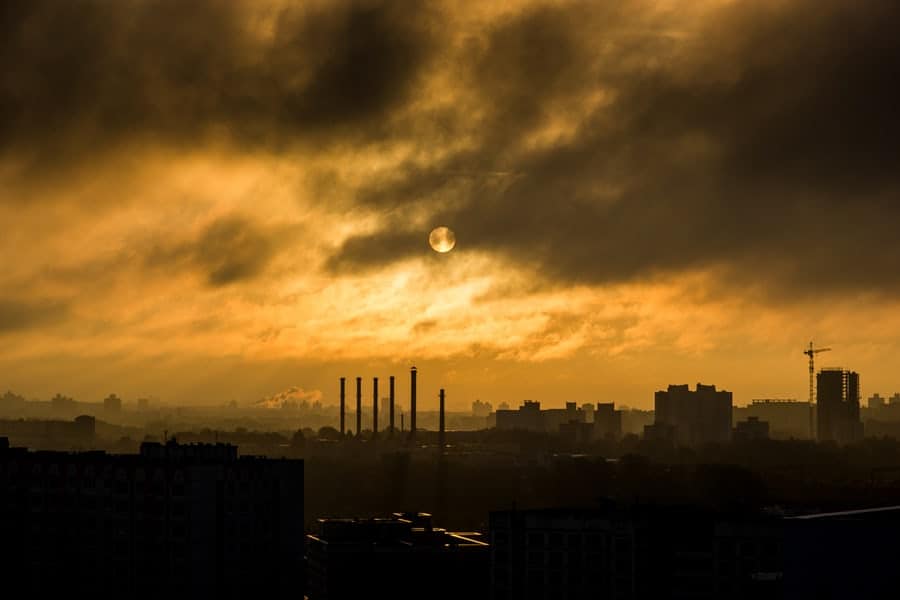CAUSE #6: Climate change

How does climate change affect bees and pollinators?
Climate change is a decisive factor in bee mortality.
Global warming is causing quite dramatic shifts in weather patterns. These changes are also causing pollinator decline in certain areas. Likewise, these changes directly affect colony survival4.
Weather and climate changes affect honey bees and other pollinators at diverse levels:
- Modified weather patterns alter the quality of the floral environment and increase or reduce colony harvesting capacity and development.
- Changes in climate patterns redefine new honey bee distribution ranges. They give rise to new competitive relationships among species and races, as well as among their parasites and pathogens.
If we as humans modify the honey bee’s environment, we should also have a duty to take measures to ensure their conservation.
How will changes in flora affect the bees?
Our climate influences flower development, as well as nectar and pollen production. Nectar and pollen supply ensures the colonies’ foraging activity and development.
For example: a pollen shortage induced by autumn drought will reduce the pollen production of flowers. Thus, it will deprive bees of food in winter, weakening their bodies. Consequently, such weak bodies can’t defend themselves when parasites attack.
Eamples for bees interacting with altered flora
- Flowers might become “unattractive” for bees: Changes in weather patterns causing excessive rainfall might lead to “unattractive” flowers. When some kinds of flowers (especially acacia) are washed by rain, their nectar becomes very diluted therefore no longer attractive to honey bees. The logical consequence might be food shortage for bees.
- Dry climate might stop the nectar production of flowers: An extremely dry climate will induce flowers to produce less nectar. Honey bees then have less nectar to forage. Same goes for extended droughts and heat periods caused by changes in weather patterns. For instance, lavender flowers produce no nectar when the weather is too dry. Again, this is a desaster for bees.
- Insects that produce honeydew are climate-dependent: The honeydew produced by insects from certain plant species is also climate-dependent. For instance, the development of balsam fir aphid populations requires very special conditions. Their honeydew is highly attractive to honey bees in Alsace, France. If the weather pattern for this regions is altered, the tiny honey dew producers could be disturbed and might stop existing. As a result, the bees of these areas would fall short of honeydew, being their main food source5.
- Drier regions might become flowerless. According to climate change predictions, desert regions will become even drier. This will lead to the disappearance of oases and their honey bees. In some areas of the California foothills, previously common native plants no longer supply fall forage to bees due to climate change.
Diseases and parasites: How will their interaction with bees evolve with climate change?
This paragraph regards the distribution and interaction of Varroa destructor, American and European foulbrood, Nosema and other viruses and mites. These parasites & diseases endanger the survival of bees in the future.
Honey bee colonies are infested by a variety of diseases and parasites.
Some of these diseases and parasites thrive better in a specific environment. Wherever an area experiences shifts in weather patterns and becomes drier or more humid, these pathogens might develop more rapidly and spread more widely.
For instance, the “chalkbrood disease“, which is caused by the fungus Ascosphera apis, develops mainly in a humid environment. It may expand where ecosystems become more humid due to climate change6.
How will climate change affect the arrival of new invasive species?
The situation of honey bees can also become critical when new predators invade and colonize their habitat.
In cause #5, we learned about the Asian hornet, but there are other threatening species as well. The bee-eater, a bird that feeds on insects and bees, originated in the Mediterranean region but has extended its distribution range, have been causing some harm to beekeepers so far.
Then there’s the small hive beetle (Aethina tumida), which originated in South Africa and develops in the weakest honey bee colonies. The parasite was imported into the USA, probably on citrus fruit on which the beetle can also develop. It has aggravated the problems of American beekeepers, especially in hot and humid regions. So far, the cold climate has hindered the beetle’s distribution. Climate change that causes temperature rise will increase the extension of its distribution range.
Conclusion:
The relationship between climate change and survival of bees and pollinators might not sound significant at first sight. Yet, the consequences of climate change have a massive impact on all insects, including bees and pollinators.
The full range of results have not been apparent yet in the present but might be more visible in the future. Probably, then it is too late to be tackled effectively.
Climate change could be even more powerful than the impact of the previously mentioned causes e.g. our farming methods.
